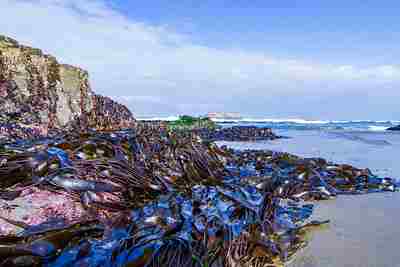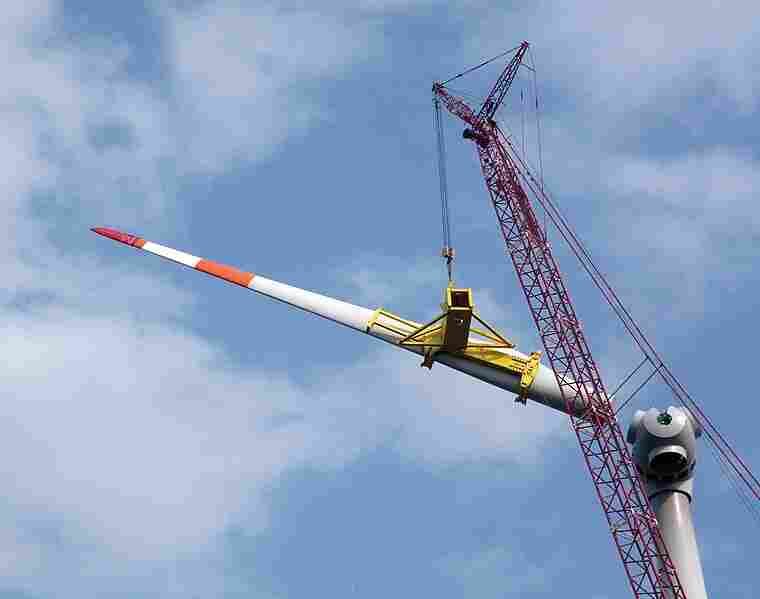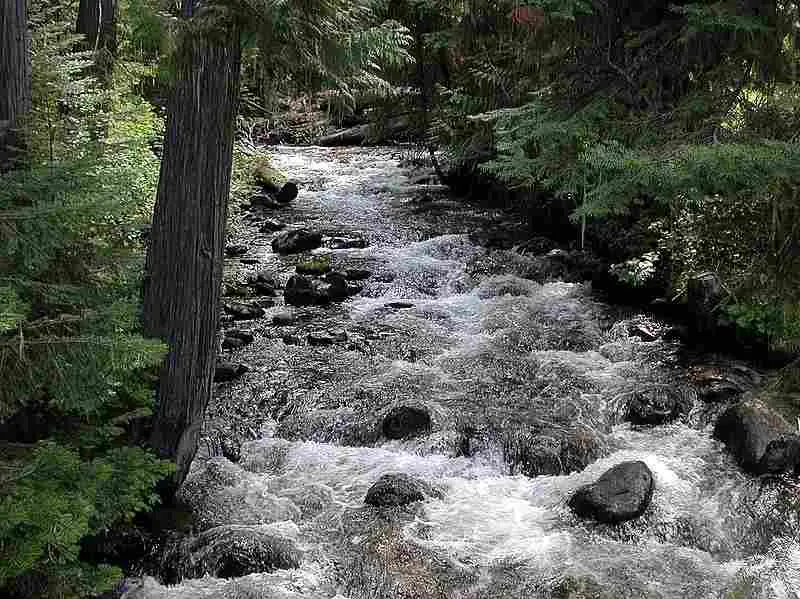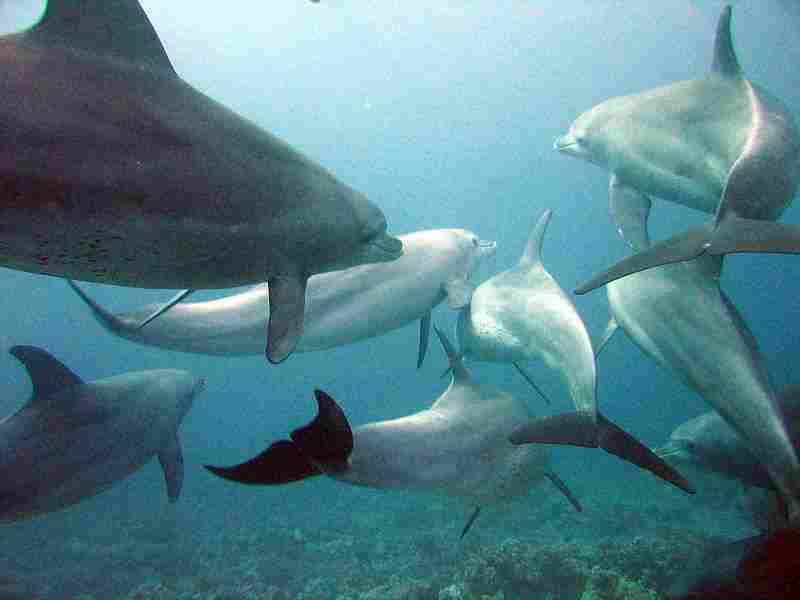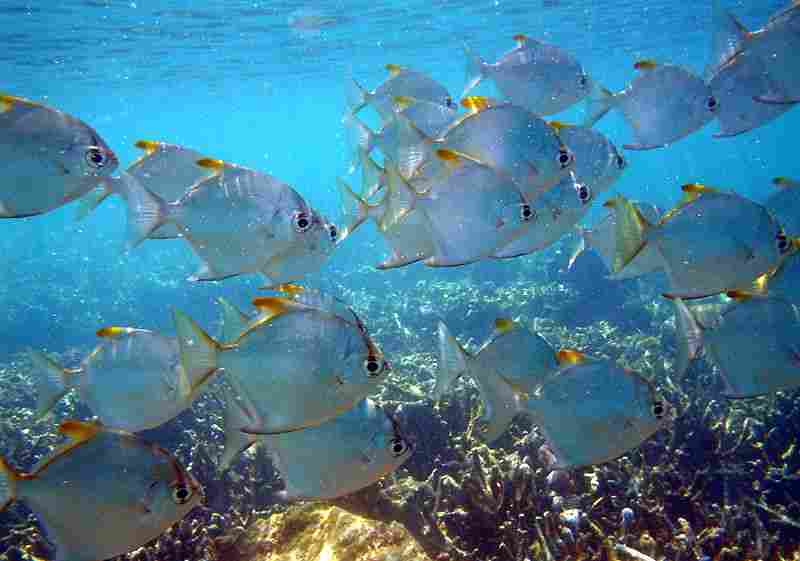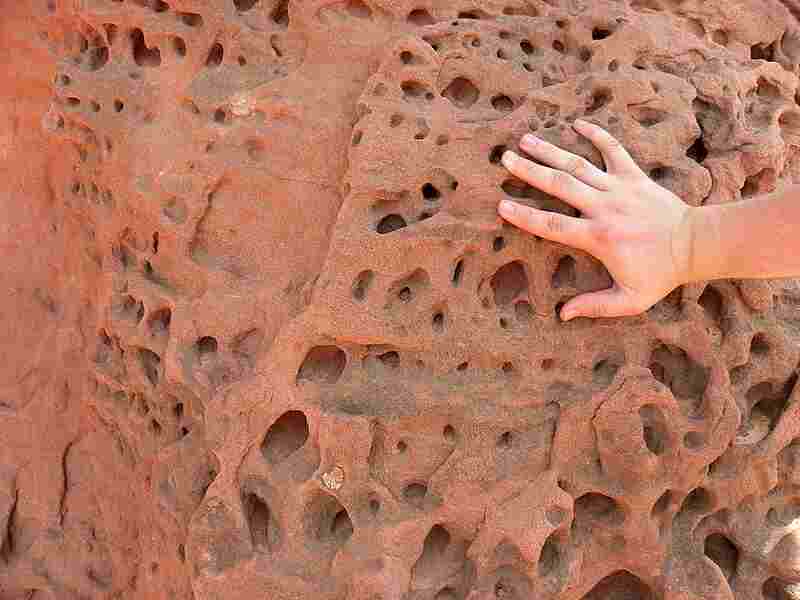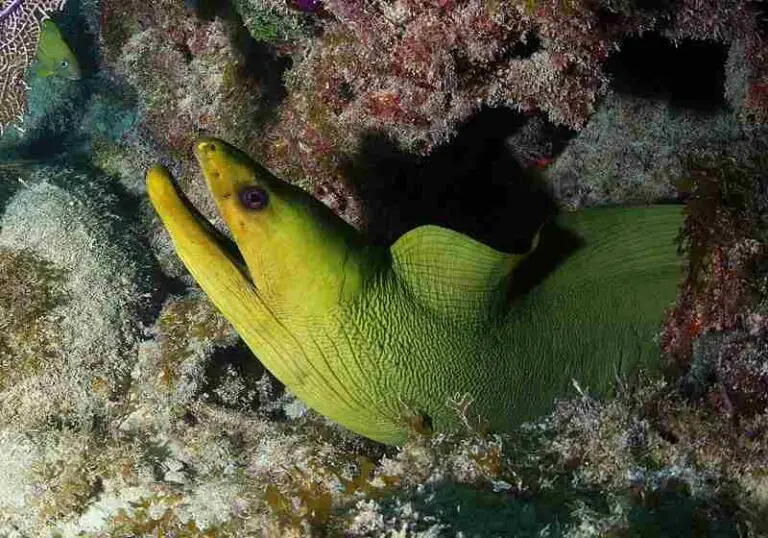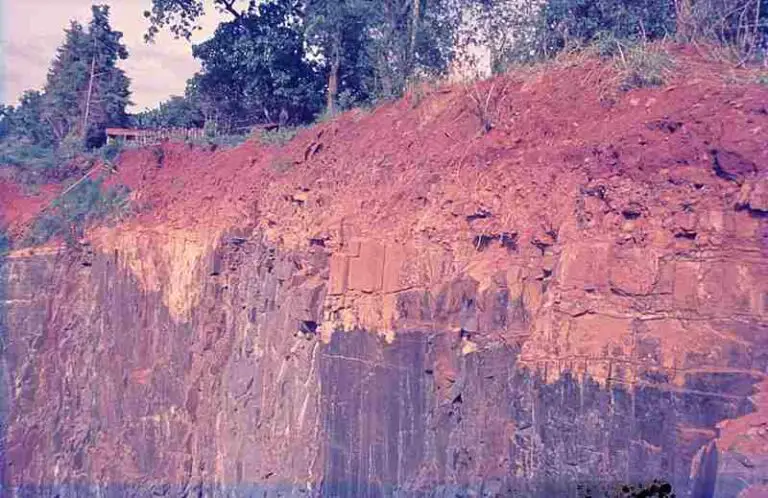9 Kelp Forest Abiotic Factors and Their Functions Discussed
Kelp forest abiotic factors include; light, water, dissolved oxygen, nutrient availability, flow trend/velocity, sediments, rocks, physicochemical parameters, and wind.
This article discusses kelp forest abiotic factors and their functions, as follows;
1). Light in a Kelp Forest (as one of the Kelp Forest Abiotic Factors)
Light is a critical abiotic component of all kelp forests, because it plays several essential roles toward the sustainability of this unique marine ecosystem.
Functions of Light in the Kelp Forest Ecosystem
Functions of light in the kelp forest ecosystem are; photosynthesis, primary production, habitat formation, environmental maintenance, and vertical zonation.
Light is the primary energy resource needed for photosynthesis in kelp and other photosynthetic organisms within the ecosystem.
Kelp, like terrestrial (vascular and non vascular) plants, is equipped with chlorophyll, which captures light from solar radiation, and converts it into chemical bioenergy. This process fuels the productivity and growth of kelp forests.

A typical attribute of kelp forests is their high primary productivity [11]. They are dominated by autotrophs that convert light energy into organic biomass, producing sugars and oxygen.
This mechanism of primary production is what establishes the foundation of the food web in kelp forests, and provides sustenance for various marine species.
Three-dimensional microhabitats are created by kelp beds, which offer shelter, protective refuge, and breeding sites for numerous marine organisms [6]. The availability/intensity of light influences the growth-rate and density of kelp, which, in turn, affects the structural development and complexity of these habitats.
Sunlight is accompanied by solar infrared radiation, which contains thermal energy or heat [10].
Heating effects of such electromagnetic radiation help to regulate water temperature within kelp forests, by influencing both the instantaneous and long-term heat content/thermal stratification of the water column.
It can also impact various chemical processes and nutrient cycling within the ecosystem. Changes in light conditions can affect the physical and chemical attributes of the surrounding water.
Availability of light generally decreases with depth in the water column. This establishes a spatial gradient of light intensity that contributes to the vertical zonation of physicochemical conditions observed in kelp forests. Different species of kelp and its associated organisms, are adapted to specific depth ranges on the basis of their light requirements.
How Light Affects Kelp Forests
Light affects kelp forests by facilitating autotrophic growth, influencing species composition, photosynthetic efficiency, cascading effects, and ecological resilience.
The growth rate and areal distribution of kelp are both directly influenced by availability of sunlight. Kelp requires sufficient light in order to perform photosynthesis and produce chemical energy for growth. Inadequate light can limit the growth of kelp biomass, leading to stunted development or even kelp loss in deeper zones (where light intensity is attenuated).
Species richness/composition is also influenced by light intensity within kelp forests. Species that are better adapted to low light-intensity conditions, tend to dominate deeper areas, while those that require more light can only thrive in shallow regions, where they also tend to dominate. Changes in light availability and/or intensity can therefore alter the balance of species within the ecosystem.
Variations in light quality, duration and intensity, can affect the photosynthetic efficiency of kelp and associated algal communities. Altered light conditions as a result of factors like seasonal changes or human activities can therefore impact overall primary productivity.
Changes in kelp distribution and growth, due to variations in light availability, can have cascading effects on the entire ecosystem. It can affect the availability of food and microhabitat for herbivores, which, in turn, influences predators in higher trophic levels.
Light-related stress, such as that which results from reduced light availability due to high turbidity, can make kelp forests more vulnerable to other stressors like disease and temperature changes within this environment. Conversely, optimal light conditions can enhance the resilience of kelp forests.
2). Water in a Kelp Forest
Water is a vital abiotic factor of in forests, and has several critical roles to play in establishing and maintaining the ecosystem.
Importance of Water in the Kelp Forest
The importance of water in the kelp forest is based on its functions as an ambient medium, as well as a means of nutrient distribution, larvae transport, temperature regulation, light intensity regulation, habitat modification, sediment transport, and oxygen cycling, among others. Below is a summarized discussion of these functions/areas of relevance.
Arguably one of the most crucial roles of water here, is as an ambient medium in which the entire kelp forest exists. These underwater ecosystems are found in cold and relatively shallow zones close to the shore [15], where water provides the ambient environment necessary for the survival of kelp and a diverse range of associated species.
Water functions as a conduit for the translocation of essential nutrients within kelp forests. These nutrients, including phosphorus and nitrogen, are essential for the growth of primary producers like kelp. Water currents help transport such nutrients to kelp and other photosynthetic organisms, thereby contributing to primary productivity.
In addition to the transport of nutrients, water currents play an effective role in dispersing the larvae of many marine organisms [1] Kelp forests serve as important natural nurseries for various fish species, as well as juvenile invertebrates. Movement of water facilitates the distribution of such larvae within and beyond the kelp forest, and influences the connectivity of inter-ecologic marine populations.

Temperature of water is a critical parameter in kelp forest ecosystems. The cool waters of kelp forests are essential for the survival of inhabitant species. Water temperature is influenced by hydrological and geographic marine processes, and can affect the distribution and adaptation of marine organisms.
Transparency and clarity of water are two vital factors that affect the penetration of sunlight, which is in turn essential for photosynthesis. Kelp and other primary producers within the ecosystem, rely on sunlight (which penetrates the water column) to generate energy through photosynthesis.
Clear water allows sunlight to reach deeper levels, supporting efficient photosynthesis that leads to optimal growth of photosynthetic organisms in kelp forests.
The flow of water, which is driven by unidirectional currents, tidal forces and waves, can influence water mixing and nutrient availability within the kelp forest. Strong water movement can enhance the rate and effectiveness of nutrient delivery to kelp, thereby benefiting primary productivity. In addition, water movement can help to disperse kelp spores [13] and larvae.
Transport of sediments is a function of water currents. Excessive sedimentation can have negative impacts on kelp, by reducing light penetration and smothering sessile organisms. Active/continuous water movement can help prevent the buildup of sediments in kelp forests.
The marine oxygen cycle is influenced and supported by water dynamics. Water contains dissolved oxygen, which is needed for the respiration of marine organisms. Kelp and other submerged autotrophs, release oxygen as a byproduct of photosynthesis, and contribute to oxygen levels in the water.
Lastly, water helps to create a dynamic physical environment within kelp forests. Both laminar flow and turbulence can affect the structure of kelp plants, controlling their growth patterns and promoting overall ecosystem durability.
3). Dissolved Oxygen in a Kelp Forest (as one of the Kelp Forest Abiotic Factors)
Dissolved oxygen (DO) is an important abiotic component of the kelp forest ecosystem, especially because it plays several critical roles, and affects the biotic factors immensely.
Kelp and other photosynthetic organisms (like phytoplankton and coralline algae) in the kelp forest, require dissolved oxygen to carry out some of their metabolic activities. During photosynthesis, these organisms consume carbon dioxide (CO2) and release oxygen into the surrounding water. This interaction with oxygen is fundamental for the production of organic matter, and provides energy for the ecosystem.
While kelp and other types of algae (including red, green algae) produce oxygen during photosynthesis, they also respire, which means they must consume oxygen for survival [3].
Respiration is a metabolic process that occurs in all aerobic living organisms, including kelp. It is essential for the maintenance of energy production and cellular functions. Deoxygenation in the water can affect the balance between photosynthesis and respiration, and may consequently inhibit the overall productivity of the ecosystem.
Through oxygenation, kelp forests have the potential to mitigate the impacts of ocean acidification within their environment. During photosynthesis, kelp absorbs excess CO2 from the surrounding water, and transforms it into dissolved oxygen. This uptake of CO2 helps to reduce the acidity of the water, and creates favorable conditions for the survival of calcifying organisms like corals and shellfish.
Like terrestrial non-vascular plants, seaweed (such as kelp), is a major contributor to global oxygen production. It is estimated that about 70% of the total available oxygen on Earth is produced by marine algae [7], including kelp. Therefore, kelp forests are essential for the maintenance of oxygen levels in the oceans and the sustenance of marine food chains/webs.
Carbon sequestration is another function that can be attributed to kelp forests, which act as carbon sinks. They are able to efficiently remove CO2 dissolved in the surface layers of the ocean during photosynthesis, and store it in their biomass. This mechanism of carbon sequestration not only reduces local acidity but also increases the levels of dissolved oxygen in the water column.
Kelp biomass is concentrated close to the surface in the canopy region. Therefore, an increase in the rate of kelp photosynthesis can elevate dissolved oxygen levels in the water's surface layers, to the benefit of organisms inhabiting this zone.
Lastly, kelp forests can locally increase pH and dissolved oxygen levels. This localized improvement in water chemistry can help to counteract decreases in pH and dissolved oxygen that may be caused by factors such as climate change.
4). Nutrient Availability in a Kelp Forest
This section discusses nutrient availability, which is a critical abiotic component of kelp forest ecosystems that plays multiple important roles.
Functions/Roles of Nutrient Availability in Kelp Forests
Nutrient availability is important to the kelp forest, because of its involvement in autotroph photosynthesis, heterotrophic growth, ecosystem continuity, as well as its interaction with environmental impacts and stressors.
Absorption of nutrients by giant kelp, which is the most dominant autotroph (or in some cases, the most dominant organism) in kelp forests, is an essential factor for the sustenance of this ecosystem. Giant kelp must absorb all the essential nutrients it requires directly from the surrounding water, in order to remain productive.
Unlike terrestrial vascular plants, giant kelp lacks a root system. Instead, it utilizes a structure called a "holdfast" (a root-like structure in many sessile marine dwellers) to anchor itself to rocky surfaces and sedimentary substrates on the seafloor [9]. This holdfast secures the kelp in place, and positions it to access waterborne nutrients.

Availability of nutrients, particularly phosphorus and nitrogen, is essential for the photosynthetic process in giant kelp. Kelp harnesses solar radiation to perform photosynthesis, converting carbon dioxide (CO2) into organic compounds through light-driven chemical reactions. The availability of nutrients, such as potassium and nitrogen, is critical to support this energy-intensive process.
Nutrient availability influences the physiological condition and wellbeing of kelp forests, at local and regional scales. Nutrient-rich waters are associated with healthier and more resilient/persistent kelp forest stands. On the other hand, a lack of essential nutrients can inhibit growth and productivity of kelps.
Lastly, nutrient availability can be affected by various environmental stressors, including climate change. Changes in nutrient input into kelp forest ecosystems can have measurable consequences for the quality and productivity of giant kelp, and the survival of other organisms within the ecosystem.
Nutrition Source and Mode in Kelps
Kelp gets its nutrients from the surrounding water in which it grows, primarily by absorption through its holdfast structure.
The mode of nutrition of giant kelp is autotrophic, meaning that it produces its own food through photosynthesis. Giant kelp uses energy from sunlight to convert CO2 and water into organic compounds like glucose, which represent stored energy in its tissues. This process requires essential nutrients like phosphorus and nitrogen.
The nutritional content of kelp is high, as it contains various vitamins and minerals, including potassium, iron, calcium, vitamin A, Vitamin B12, magnesium, soluble fiber, iodine, heart-healthy omega-3 fatty acids and protein-building amino acids. However, its nutritional content may vary depending on factors such as species, and growth conditions.
5). Flow Trend/Velocity in a Kelp Forest (as one of the Kelp Forest Abiotic Factors)
The flow trend and velocity of water within a kelp forest are two crucial and closely-linked abiotic factors, that have significant impacts on the ecosystem.
Interactions/Functions of Flow Trend and Velocity in Kelp Forests
Functions of flow trend and velocity in kelp forests include structural influence on kelps, spore dispersal, ecosystem engineering, headland upwelling, and sediment transport.
Water motion, including laminar and turbulent currents, can directly impact the structure and biological performance of kelp forests. Strong water currents and extreme floods can break, dislodge or submerge kelp fronds and stipes, often resulting in kelp mortality [4]. Flow dynamics play a critical role in determining the spatial configuration of kelp within the forest.
Kelp spores depend significantly on water masses and currents for their transport and dispersal. These spores, which are released by mature kelp individuals, require water dynamics to disperse and settle in suitable locations for germination and growth. Flow patterns can therefore influence the distribution of young kelp plants and the colonization of new areas, both of which control, the overall structure of the forest.
Conversely, kelp forests can also alter local water flow patterns. They are able to attenuate ambient flows, effectively reducing their velocity and increasing their radius of curvature. This means that kelp forests can modify the flow of water around them, in such a manner that creates unique hydrological regimes within and around the forest.
Through such attenuation mechanisms, dense kelp forests have been observed to suppress headland upwelling; a phenomenon that occurs when water moves from deeper areas towards the surface, around headlands. Kelp forests can serve as a mechanical barrier that dampens this upwelling, influencing nutrient transport and primary productivity within the ecosystem.
The trend of distribution of water masses and sediments along coastlines, can be altered by kelp forests. They can influence erosion and sediment deposition patterns in nearshore environments. This alteration of sediment movement can have largescale implications for coastal ecosystems.

Dispersal and recruitment patterns of kelp spores are governed by the physical flow of water. Understanding flow velocity is therefore an essential factor for predicting where kelp spores will settle and establish new individuals, ultimately influencing the composition and structure of the entire kelp forest.
Overview of Hydrological Effects On Kelp Forests
Water motion affects kelp forests in several ways. Strong laminar currents, and turbulence, can lead to kelp dislodgement and mortality, impacting forest structure and endangering inhabitants.
Flow patterns influence the dispersal of kelp spores and the distribution/spatial colonization of young kelp plants. In addition, kelp forests can alter local flow regimes and dampen headland upwelling.
Kelp forests affect flow around headlands, through mechanical buffering and attenuation. Dense kelp forests can suppress headland upwelling, whereby water masses move from deeper areas toward the surface around headlands. By suppressing upwelling, kelp forests modify local flow patterns, which can influence primary productivity and nutrient transport in the vicinity of the headlands.
6). Sediments in a Kelp Forest
Sediments play a key role as an abiotic component of kelp forest ecosystems. They can be described as a mixture of mineral and organic particles that can be transported and deposited, so that they accumulate on the ocean floor. There are various functions that can be attributed to sediments within the ecosystem.
Functions of Sediments in Kelp Forests
Sediments are important in kelp forests due to their effect on light penetration, their role in substrate attachment, their impact on community composition, water pollution, and carbon sequestration.
Kelp forests can be significantly affected by sedimentation, usually in a negative way. Sudden influx of sediment loads from sources like stormwater and flood runoffs can harm kelp communities. Increased loads of sediment can reduce the amount of sunlight penetrating the water, thereby inhibiting photosynthesis in kelp and other primary producers [5].
As earlier stated, kelp does not possess roots like terrestrial plants. Instead, it attaches to substrates using specialized structures referred to as holdfasts. These holdfasts secure kelp to hard substrates such as rocks or cobble. Fine sedimentary particles can smother and cover these attachment points, potentially destabilizing kelp plants; while larger, coarser sediments provide more reliable anchorage.
Excessive sedimentation in kelp forest areas can lead to measurable community shifts. When the volume of sedimentary particles increase, kelp canopies may be replaced by turf-forming communities, so that the overall structure and organic composition of the ecosystem becomes altered.
Pollution is linked to sedimentation in kelp forests, because sediments can serve as carriers of pollutants and contaminants into the ecosystem. Their influx may therefore negatively impact water quality. The survival of kelp and associated organisms can be significantly affected, as these organisms are generally sensitive to pollutants in sediment and water.
In some cases, kelp forests can be effective at sequestering carbon, including carbon which is buried in soft sediments on the ocean floor. The burial of kelp carbon in sediments contributes to the overall carbon storage and cycling that occur in marine ecosystems.
Overview of Sedimentary Substrate and Its Impact on the Kelp Forest
Sedimentation can affect kelp forests negatively by reducing sunlight penetration, altering community composition, and smothering kelp holdfasts. Excessive sedimentation can result in ecological shifts from kelp-dominated ecosystems to turf-forming communities.
The substrate of a kelp forest typically comprises of hard surfaces like rock masses or cobble, which provide attachment points for kelp holdfasts. These substrates are critical for the anchorage and growth of kelp, which lacks traditional roots.
7). Rocks in a Kelp Forest (as one of the Kelp Forest Abiotic Factors)
Rocks are a fundamental abiotic component of the kelp forest ecosystems.
This is because they serve as the primary substrate material to which kelp adheres, and provide essential functions within the ecosystem.
Functions of Rocks in Kelp Forests
Rocks provide a reliable attachment surface for kelp, supporting their growth and protecting them from strong water currents.
Kelp forests are unique in that they form on top of rocky reefs [14], where few other sessile organisms can thrive. Kelp species, such as the giant kelp (Macrocystis), attach themselves to submerged rocks using specialized holdfast structures. These structures function as anchor points which secure the kelp plants to the rocky substrate.

Rocks provide support for kelp growth, by allowing the anchorage of tough and branched holdfasts that grip onto the rock surface. These holdfasts are a medium of structural stability and support for the kelp plants, and allow them to grow upright towards the sunlight.
Rock attachment is crucial for the ability of kelps to access sunlight and conduct photosynthesis, which is the basis of energy production in this habitat.
Kelp forests are often situated in areas with strong ocean currents. Rocky substrate provides a stable platform for the attachment of kelp holdfasts, thereby helping kelp to withstand the force of these currents. Without the rocks, kelp would be highly susceptible to dislodgement.
Overview of the Relationship Between Kelp and Rock Substrates
Kelp lives on rocks, which serve as a substrate for attachment. Most kelp forests form on top of rocky reefs, and the kelp species attach themselves to submerged rocks using holdfasts. These holdfasts anchor the kelp to rock surfaces, allowing them to grow in the underwater environment.
Kelp attaches to rocks using specialized, root-like structures called holdfasts. These holdfasts are tough and branched extensions that grip onto the rocky substrate. They function as anchors that secure the kelp plants to the rocks and provide both stability and support for kelp growth. Holdfasts are critical for kelp to withstand the impact of ocean currents and access sunlight for photosynthesis.
8). Physicochemical Parameters in a Kelp Forest
Physicochemical parameters are crucial role in establishing and modifying the abiotic conditions within a kelp forest ecosystem.
These parameters encompass various physical and chemical attributes of the aquatic environment that affect the biological performance of kelp and the overall success of the ecosystem. Some key functions and influences of physicochemical parameters in kelp forests are discussed in this section.
Functions of Physicochemical Parameters in Kelp Forests
Physicochemical parameters in kelp forests include; temperature, nutrient availability, water clarity, pH, dissolved oxygen (DO) concentration, and salinity.
Temperature is a critical physicochemical factor in kelp forest ecosystems. Kelp forests generally thrive in waters with temperatures between 5-20 degrees Celsius (42–72 degrees Fahrenheit) [12]. Temperature influences the metabolic rates of kelps and other organisms within the ecosystem. Also, extreme temperature variations can lead to thermal stress which impacts organic growth.
Nutrient availability determines ecological performance, as nutrient-rich waters are essential for the wellbeing of kelp forests. These nutrients support the development of primary producers like sessile macroalgae and phytoplankton. Nutrients like phosphorus and nitrogen, are required for photosynthesis and primary production.
Clarity of water is vital in kelp forests because a clear water column allows sunlight to penetrate to the depth of substrates where kelp begins to grow. Sunlight is an essential resource for photosynthesis, which is the ultimate source of energy for kelps and the foundation of the food chain in these ecosystems.
pH (Acidity, Alkalinity) can control the availability of carbonate ions, which are essential for the growth of calcifying organisms [8]. This implies that changes in pH can impact the calcification processes of some species within the kelp forest ecosystem, thereby altering species richness/composition.
Optimal concentration of dissolved oxygen is crucial for the survival of various organisms within the kelp forest, including invertebrates, fish, and kelp itself. Oxygen supports respiration, and insufficient levels can stress these organisms, posing a threat to their survival.
Salinity tends to affect the overall water chemistry, and influence the distribution and wellbeing of marine life, in kelp forests. Extreme salinity fluctuations can have negative effects on local kelp communities, and average salinity conditions determine the species composition of the ecosystem.
Overview of Physicochemical Factors and Physical Conditions in Kelp Forests
The physical conditions in kelp forests include; nutrient-rich waters, variable temperature (42–72 degrees Fahrenheit), clarity-dependent sunlight penetration, variable pH levels, dissolved oxygen concentration, and salinity levels.
Several physical factors influence kelp communities, including temperature, water clarity (linked to sunlight availability), nutrient availability, pH levels, dissolved oxygen levels, and salinity. These factors collectively determine the distribution, instantaneous condition, and long-term continuity of kelp and other species within the ecosystem. Extreme variations in physical parameters can disrupt the balance of kelp communities.
9). Wind in a Kelp Forest (as one of the Kelp Forest Abiotic Factors)
Wind, as an abiotic component of the kelp forest ecosystem, is critical in its contribution to the physical and ecological dynamics of these underwater marine communities.
This section highlights some key functions and influences of wind in a kelp forest ecosystem.
Functions and Influences of Wind in Kelp Forests
The functions and influences of wind in kelp forests can be discussed in terms of; seasonal disturbance, induced resilience, upwelling influence, erosion, sediment transport, and inter-abiotic interactions.
Seasonal variations in wind-current patterns can create disturbances in kelp forests and their environs. During the winter months for example, high winds and strong storm waves can have a significant effect on kelp communities. These storms can tear and damage kelp fronds, uproot entire kelp beds from the rocky seafloor, and create a dilapidated and less dense canopy with less inhabitant-diversity [2]. This seasonal disturbance is a natural part of the kelp forest's life cycle, often influencing the structural development of the forest.
Wind-induced disturbances are essential for developing adaptations and building the resilience of kelp forests. While storms can be damaging to individual kelp plants, they can also create open spaces and gaps within the canopy. This creates microhabitats, and allows new kelp spores and individuals to settle and grow, thereby contributing to the regeneration and organic diversity of the kelp forest.
In some kelp forest ecosystems, persistent upwelling winds during spring, summer, and fall can influence the patterns of water circulation. Upwelling brings cold and nutrient-rich water from the deep ocean to the surface. This nutrient influx enhances primary production by providing kelp and other autotrophs with the required nutrients for growth.
Erosion of sediments along coastal areas can be influenced by wind-driven currents and waves. Eroded sediments can in turn impact the clarity of the water in kelp forest ecosystems. Excessive sedimentation tends to reduce light penetration, which is essential for photosynthesis in primary producers.
Lastly, wind interacts with other kelp forest abiotic factors such as water currents, salinity and temperature. These interactions can affect the physical and chemical conditions within the kelp forest, and influencing the dynamics of various species.
Conclusion
Kelp forest abiotic factors are;
1. Light
2. Water
3. Dissolved Oxygen
4. Nutrient Availability
5. Flow Trend/Velocity
6. Sediments
7. Rocks
8. Physicochemical Parameters
9. Wind
References
1). Bartlett, J. C.; Convey, P.; Hughes, K. A.; Thorpe, S. E.; Hayward, S. A. L. (2021). "Ocean currents as a potential dispersal pathway for Antarctica’s most persistent non-native terrestrial insect." Polar Biology 44(320). Available at: https://doi.org/10.1007/s00300-020-02792-2. (Accessed 13 September 2023).
2). Byrnes, J.; Reed, D. C.; Cardinale, B. J.; Cavanaugh, K. C.; Holbrook, S. J.; Schmitt, R. J. (2011). "Climate‐driven increases in storm frequency simplify kelp forest food webs." Global Change Biology 17(8):2513 - 2524. Available at: https://doi.org/10.1111/j.1365-2486.2011.02409.x. (Accessed 13 September 2023).
3). Cohen, R. H. R. (1990). "Biochemical oxygen demand and algae: Fractionation of phytoplankton and nonphytoplankton respiration in a large river." Water Resources Research, Volume 26, Issue 4 p. 671-678. Available at: https://doi.org/10.1029/WR026i004p00671. (Accessed 13 September 2023).
4). Davis, T.; Larkin, M.; Forbes, A.; Veenhof, R.; Scott, A.; Coleman, M. A. (2022). "Extreme flooding and reduced salinity causes mass mortality of nearshore kelp forests." Estuarine Coastal and Shelf Science 275:107960. Available at: https://doi.org/10.1016/j.ecss.2022.107960. (Accessed 13 September 2023).
5). Desmond, M. J.; Pritchard, D. W.; Hepburn, C. D. (2015). "Light Limitation within Southern New Zealand Kelp Forest Communities." PLoS One. 2015 Apr 22;10(4):e0123676. Available at: https://doi.org/10.1371/journal.pone.0123676. (Accessed 13 September 2023).
6). Graham, M. H.; Kinlan, B. P.; Druehl, L. D.; Garske-Garcia, L. E.; Banks, S. (2007). "Deep-water kelp refugia as potential hotspots of tropical marine diversity and productivity." Proceedings of the National Academy of Sciences 104(42):16576-80. Available at: https://doi.org/10.1073/pnas.0704778104. (Accessed 13 September 2023).
7). Greenbaum, E.; Guillard, R. R. L.; Sunda, W. G. (1983). "Hydrogen and Oxygen photoproduction by marine algae." Photochemistry and Photobiology 37(6):649 - 655. Available at: https://doi.org/10.1111/j.1751-1097.1983.tb04534.x. (Accessed 13 September 2023).
8). Hofmann, G. E.; Barry, J. P.; Edmunds, P.; Gates, R. D.; Hutchins, D. A.; Klinger, T.; Sewell, M. A. (2010). "The Effect of Ocean Acidification on Calcifying Organisms in Marine Ecosystems: An Organism-to-Ecosystem Perspective." Annual Review of Ecology Evolution and Systematics 41(1):127-47. Available at: https://doi.org/10.1146/annurev.ecolsys.110308.120227. (Accessed 13 September 2023).
9). Milligan, K. L.; DeWreede, R. E. (2000). "Variations in holdfast attachment mechanics with developmental stage, substratum-type, season, and wave-exposure for the intertidal kelp species Hedophyllum sessile (C. Agardh) Setchell." J Exp Mar Biol Ecol. 2000 Nov 20;254(2):189-209. Available at: https://doi.org/10.1016/s0022-0981(00)00279-3. (Accessed 13 September 2023).
10). Rhodes, C. J. (2010). "Solar energy: principles and possibilities." Sci Prog. 2010;93(Pt 1):37-112. Available at: https://doi.org/10.3184/003685010X12626410325807. (Accessed 13 September 2023)..
11). Rodgers, K.; Shears, N. (2016). "Modelling kelp forest primary production using in situ photosynthesis, biomass and light measurements." Marine Ecology Progress Series 553. Available at: https://doi.org/10.3354/meps11801. (Accessed 13 September 2023).
12). Rose, D.; Grear, M. E. (2022). "Marine Renewable Energy Applications for Restorative Ocean Farming: Kelp FY21 Seedling Final Report." PNNL-32776Affiliation: Pacific Northwest National Laboratory. Available at: https://doi.org/10.2172/1902759. (Accessed 13 September 2023).
13). Rosman, J. H.; Monismith, S. G.; Denny, M. W.; Koseff, J. (2010). "Currents and turbulence within a kelp forest (Macrocystis pyrifera): Insights from a dynamically scaled laboratory model." Limnology and Oceanography 55(3):1145-1158. Available at: https://doi.org/10.4319/lo.2010.55.3.1145. (Accessed 13 September 2023).
14). Smale, D. A.; Burrows, M.; Evans, A.; King, N. G.; Sayer, M. Dj.; Yunnie, A. L. E.; Moore, P. J. (2015). "Linking environmental variables with regional-scale variability in ecological structure and standing stock of carbon within kelp forests in the United Kingdom." Marine Ecology Progress Series 542. Available at: https://doi.org/10.3354/meps11544. (Accessed 13 September 2023).
15). Steneck, R. M.; Graham, M. H.; Bourque, B. J.; Corbett, D.; Erlandson, J.; Estes, J. A. (2002). "Kelp Forest Ecosystems: Biodiversity, Stability, Resilience and Future." Environmental Conservation 29(04):436-459. Available at: https://doi.org/10.1017/S0376892902000322. (Accessed 13 September 2023).
